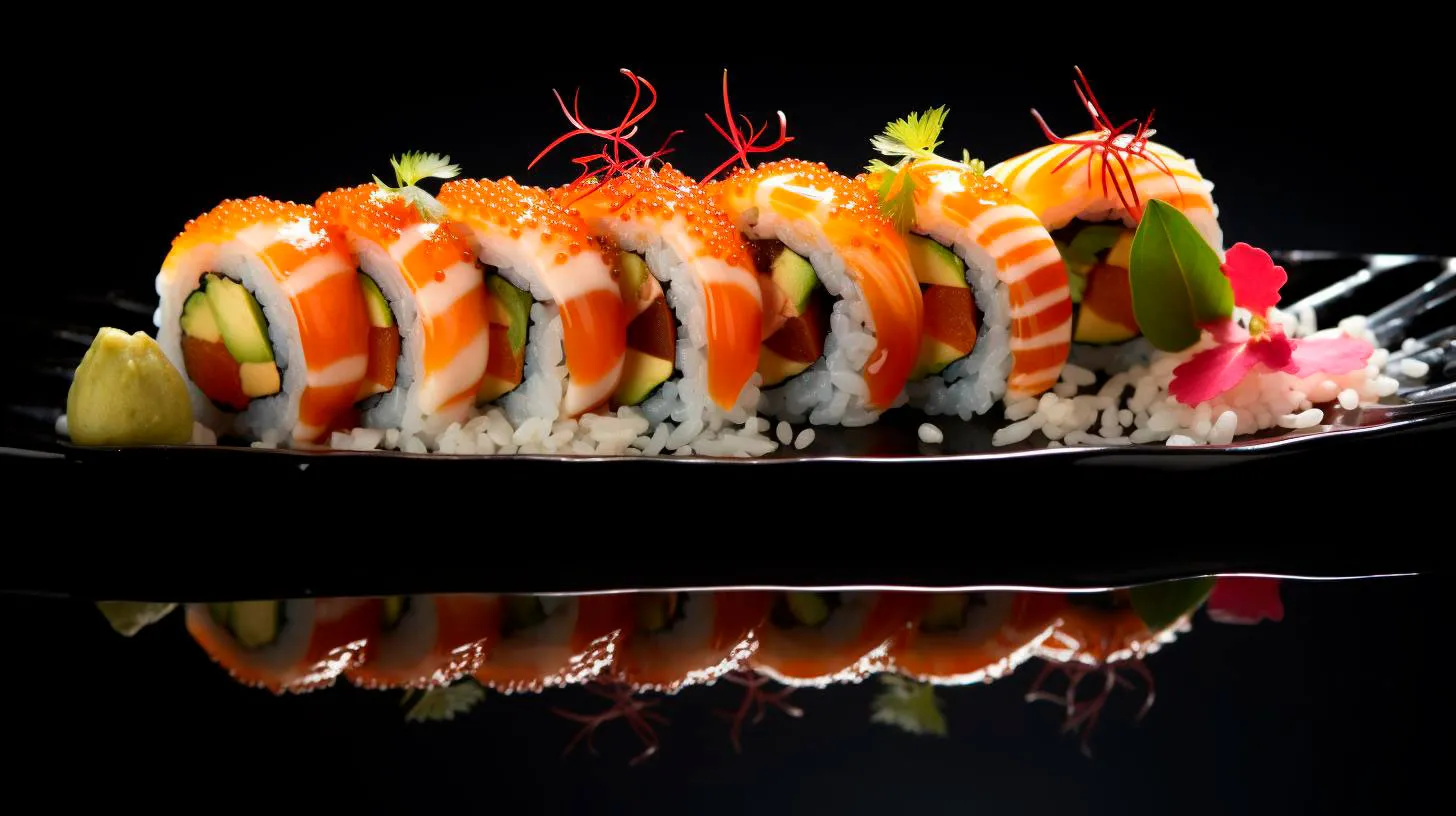Reducing Carbon Footprint in Culinary Education: Eco-Friendly Practices in Cooking Schools
In this article, we will explore some of the key ways cooking schools can adopt eco-friendly practices and contribute to a greener future.
The Importance of Reducing Carbon Footprint in Culinary Education
Before we dive into the sustainable practices, let’s understand why it is crucial for cooking schools to reduce their carbon footprint:
- Environmental Impact: Cooking schools have a significant environmental impact due to energy consumption, waste generation, and food production. By implementing eco-friendly practices, these schools can play a vital role in reducing greenhouse gas emissions.
- Role Modeling: As educational institutes, cooking schools have the opportunity to set an example and inspire the next generation of chefs to adopt sustainable practices. By integrating environmentally-friendly methods into their curriculum, they can shape future culinary professionals with a strong sense of responsibility towards the environment.
- Industry Reputation: Adopting eco-friendly practices can enhance the reputation of cooking schools, attracting environmentally conscious students and faculty. This can lead to increased enrollment and partnerships with like-minded organizations, ultimately benefiting the school’s overall growth and recognition.
Key Eco-Friendly Practices in Cooking Schools
1. Energy Efficiency
Reducing energy consumption is one of the most effective ways for cooking schools to lower their carbon footprint. Here are some energy-saving measures they can implement:
- Installing energy-efficient appliances and equipment in the kitchen, such as induction cooktops, convection ovens, and energy-saving refrigerators.
- Optimizing kitchen ventilation systems to save energy while maintaining a healthy cooking environment.
- Using smart lighting solutions, such as LED bulbs and motion sensors, to minimize electricity usage.
Key Takeaway: Implementing energy-efficient measures can significantly reduce a cooking school’s carbon emissions while also reducing operational costs.
2. Waste Reduction and Recycling
Waste generation is a significant concern in cooking schools, from food scraps to packaging material. By implementing waste reduction and recycling practices, cooking schools can make a significant positive impact:
- Setting up composting systems to divert food waste from landfills and use it for organic gardening or donate it to local farms.
- Encouraging the use of reusable containers and packaging materials, reducing the reliance on single-use plastics.
- Establishing recycling stations throughout the school premises for proper disposal of paper, plastic, glass, and metal waste.
Key Takeaway: Cooking schools can minimize their environmental impact by reducing waste generation and promoting recycling practices.
3. Sustainable Ingredients and Local Sourcing
The food industry’s carbon footprint heavily relies on the production, transportation, and consumption of ingredients. Promoting sustainable and locally sourced ingredients can significantly reduce greenhouse gas emissions. Here’s how cooking schools can contribute:
- Collaborating with local farmers and suppliers to source seasonal, organic, and locally grown ingredients, reducing the carbon footprint associated with long-distance transportation.
- Educating students about sustainable fishing practices, responsible farming, and the importance of biodiversity in food production.
- Encouraging the use of plant-based alternatives and reducing animal product consumption, which can positively impact the environment and personal health.
Key Takeaway: By promoting sustainable ingredients and advocating for local sourcing, cooking schools can support eco-friendly practices within the food industry.
The Future of Culinary Education: Bridging Sustainability and Cooking Skills
Embracing eco-friendly practices not only reduces the carbon footprint of cooking schools but also equips students with the necessary skills to thrive in a sustainable culinary industry. Here are some key takeaways that cooking schools can emphasize:
- Teaching students about sustainable cooking techniques, such as energy-efficient cooking methods and reducing food waste.
- Providing hands-on experiences in urban gardening and farm-to-table practices.
- Integrating sustainability-focused modules into the curriculum, covering topics like eco-conscious menu planning, ethical sourcing, and responsible food handling.
By combining culinary skills with sustainable practices, cooking schools can nurture a new generation of chefs who prioritize environmental stewardship.
Conclusion
Cooking schools have a tremendous opportunity to make a positive impact on the environment by adopting eco-friendly practices. Through energy efficiency, waste reduction, sustainable sourcing, and educational initiatives, these schools can foster sustainable culinary practices and inspire future generations to value the importance of reducing their carbon footprint. By embracing eco-friendly methods, cooking schools not only contribute to a greener future but also enhance their reputation and attract environmentally-conscious students.
Let’s work together to create a sustainable and thriving culinary industry!
Incorporating Sustainability in Culinary Training: Environmental Initiatives for Future Chefs
By incorporating sustainable practices and adopting eco-friendly approaches, future chefs can lay the foundation for a greener and more sustainable food industry.
The Importance of Sustainability in Culinary Training
With the growing concern over climate change and environmental degradation, the need for sustainability in the culinary world is more crucial than ever before. Here are some key reasons why sustainability should be an integral part of culinary training:
- Conservation of Natural Resources: Incorporating sustainable practices helps conserve valuable natural resources such as water, energy, and agricultural land.
- Reduction of Food Waste: By minimizing food waste, chefs can contribute to reducing greenhouse gas emissions and combatting hunger.
- Support for Local Communities: Embracing sustainable agriculture and sourcing ingredients locally supports local farmers and promotes economic growth.
- Promotion of Health: Sustainable cooking often leads to healthier meals, as it emphasizes the use of fresh, organic ingredients and minimizes the use of harmful additives.
Sustainable Initiatives in Culinary Training
Several sustainable initiatives can be incorporated into culinary training programs, equipping future chefs with the knowledge and skills needed to make a positive environmental impact. Here are a few notable initiatives:
1. Farm-to-Table Practices
Introducing aspiring chefs to farm-to-table practices emphasizes the importance of using locally sourced ingredients. By partnering with local farmers and suppliers, chefs can reduce the carbon footprint associated with transportation while supporting the local economy. Additionally, chefs can learn about seasonality and the benefits of using fresh, organic produce.
2. Waste Reduction and Recycling
Culinary training should educate future chefs on efficient waste management techniques. Implementing recycling programs, composting organic waste, and utilizing leftovers creatively can significantly reduce food waste in the industry. By understanding proper portion control and storage practices, chefs can minimize the amount of food discarded, thus conserving resources.
3. Energy-Efficient Cooking Techniques
Teaching energy-efficient cooking techniques is essential in promoting sustainability. Chefs should be encouraged to use energy-saving equipment, such as induction cooktops and convection ovens. Additionally, incorporating cooking methods that require less energy, such as steaming and stir-frying, can contribute to reducing the overall carbon footprint of culinary operations.
4. Sustainable Seafood Sourcing
Overfishing and destructive fishing practices have led to the depletion of our ocean’s resources. Culinary training programs should educate future chefs about sustainable seafood sourcing and responsible fishing practices. By choosing sustainably harvested seafood and supporting fisheries with proper management, chefs can help preserve marine ecosystems and protect vulnerable species.
Key Takeaways for Future Chefs
Aspiring chefs who prioritize sustainability in their culinary training can make a significant difference in the food industry’s environmental impact. Here are some key takeaways:
- Embrace sustainable agricultural practices and seek locally sourced ingredients.
- Minimize food waste through proper portion control and creative use of leftovers.
- Utilize energy-efficient cooking techniques and equipment to reduce energy consumption.
- Choose sustainable seafood options to support responsible fishing practices.
- Stay updated on current sustainability practices and trends in the industry.
By implementing these practices, future chefs can not only make a positive impact on the environment but also improve the health and well-being of consumers. The culinary industry has the power to lead the way towards a more sustainable future, one delicious plate at a time.
Sustainable Sushi: Promoting Ocean Conservation through Responsible Consumption
Sustainable seafood practices have gained popularity, and one aspect of this movement is the promotion of sustainable sushi. By making responsible choices when it comes to sushi, we can contribute to ocean conservation efforts. In this article, we will explore the concept of sustainable sushi and how it can make a difference in protecting our oceans.
Understanding the Importance of Sustainable Sushi
Sushi has undoubtedly become a globally loved delicacy, with a wide range of flavors and varieties. However, the demand for sushi has put immense pressure on marine ecosystems. Overfishing, destructive fishing practices, and the depletion of fish populations have become grave concerns. Sustainable sushi aims to address these issues by promoting responsible fishing methods and educating consumers about the impact of their choices.
The Benefits of Sustainable Sushi
- Preservation of marine ecosystems: By supporting sustainably sourced sushi, we contribute to the preservation of marine ecosystems, including coral reefs and other habitats.
- Protection of endangered species: Sustainable sushi practices prioritize avoiding endangered species, helping to protect and conserve these vulnerable populations.
- Promotion of responsible fishing: By supporting sustainable sushi, we encourage fishing practices that prioritize long-term environmental sustainability and minimize bycatch.
- Economic benefits: Embracing sustainable sushi practices can have positive economic effects. It creates a demand for responsibly caught fish, supporting local fishing communities focused on sustainable practices.
Choosing Sustainable Sushi
With the rising popularity of sustainable sushi, many sushi restaurants and suppliers are now offering options that prioritize responsible consumption. By considering a few key factors, we can make eco-friendly choices when enjoying our favorite sushi rolls:
1. Seek Certification and Labels
Look for certifications and labels that guarantee sustainably sourced seafood. Recognized certifications include the Marine Stewardship Council (MSC) and Aquaculture Stewardship Council (ASC). These labels ensure that the fish used in your sushi has been sourced responsibly, minimizing environmental impact.
2. Opt for Sustainable Species
Choose sushi options made from sustainable species that are abundant and not under threat. Popular sustainable sushi options include Alaskan salmon, Arctic char, mackerel, and US-farmed shrimp. Avoid species like bluefin tuna, which are severely overfished.
3. Verify the Origins
Ask your sushi chef or supplier about the origins of the seafood used. Knowing where the fish comes from and how it was caught can give you insights into the sustainability of the sushi you are consuming.
4. Be Mindful of Sushi Fillings
Sushi with fillings like eel, shrimp, or crab may have negative ecological impacts due to destructive fishing practices. Instead, consider vegetarian or vegan sushi options, such as avocado or cucumber rolls.
The Power of Individual Actions
It’s essential to realize that the choices we make as individuals can have a significant collective impact. By prioritizing sustainable sushi options and supporting responsible fishing practices, we become advocates for ocean conservation. Additionally, by spreading awareness about sustainable sushi amongst friends and family, we can encourage others to join us in making a positive difference.
As we strive to protect our oceans and conserve marine life, sustainable sushi is a simple yet effective way to contribute. By adjusting our consumption habits and making informed choices, we can enjoy our sushi while ensuring the health and sustainability of our oceans for future generations.
Join the sustainable sushi movement today and let’s embrace a delicious, eco-friendly way of enjoying one of our favorite foods!
Preserving Marine Biodiversity: Exploring Sustainable Sourcing in Sushi Cuisine
As responsible consumers, it is essential to explore sustainable sourcing in sushi cuisine to preserve our oceans’ biodiversity and ensure a healthier future. In this article, we will delve into the importance of sustainable seafood sourcing, the challenges it faces, and the benefits it brings to both the environment and sushi lovers around the globe.
The Importance of Sustainable Sourcing
Sourcing sustainable seafood is crucial for the preservation of marine biodiversity and the overall health of our oceans. As the demand for sushi continues to rise, overfishing, destructive fishing methods, and illegal fishing have taken a toll on many fish populations.
- Preserving Marine Ecosystems: Sustainable sourcing ensures that fishing practices do not disrupt or destroy fragile marine ecosystems. By respecting the delicate balance of these ecosystems, we can protect the numerous species that rely on them.
- Conserving Endangered Species: Many sushi favorites, such as bluefin tuna, are listed as endangered due to overfishing. Opting for sustainably sourced alternatives helps protect these threatened species from further decline.
- Supporting Local Communities: Sustainable sourcing practices often prioritize fishing communities that rely on the ocean for their livelihoods. By choosing sustainably sourced sushi, we can support these communities and promote fair and ethical trade.
The Challenges of Sustainable Sourcing
While the importance of sustainable sourcing is clear, there are several challenges that the sushi industry faces in implementing these practices:
- Traceability: It can be challenging to trace the origins of seafood and ensure that it has been sourced sustainably. Establishing robust traceability systems is crucial to combat illegal, unreported, and unregulated fishing.
- Changing Consumer Preferences: Educating consumers about the importance of sustainable sourcing and encouraging them to choose responsible sushi options can be a slow and challenging process.
- Supply Chain Complexities: The sushi industry has a complex supply chain, making it challenging to ensure that every step, from fishing to preparation, is sustainable. Collaboration within the industry is vital to address these complexities.
The Benefits of Sustainable Sourcing
Embracing sustainable sourcing practices in sushi cuisine brings numerous benefits:
- Species Repopulation: With sustainable sourcing, overexploited fish populations have the opportunity to recover, allowing for healthier oceans and more abundant seafood options.
- Enhanced Reputation: Restaurants and sushi businesses that prioritize sustainable sourcing can differentiate themselves and build a positive reputation among eco-conscious consumers.
- Improved Ocean Health: Sustainable sourcing helps maintain the delicate balance of marine ecosystems, leading to healthier, more resilient oceans capable of sustaining future generations.
Key Takeaways
Sushi cuisine offers a unique opportunity to explore sustainable sourcing practices and preserve marine biodiversity. By choosing sustainably sourced sushi, we can protect the delicate ecosystems that marine species rely on, conserve endangered species, and support local fishing communities.
The challenges facing sustainable sourcing in sushi cuisine, such as traceability and changing consumer preferences, can be overcome through collaboration within the industry and continuous education efforts. Embracing sustainable sourcing not only benefits the environment but also enhances the reputation and long-term viability of the sushi industry.
Together, let’s make informed choices and ensure that sushi remains a delicious and sustainable delicacy for generations to come.


